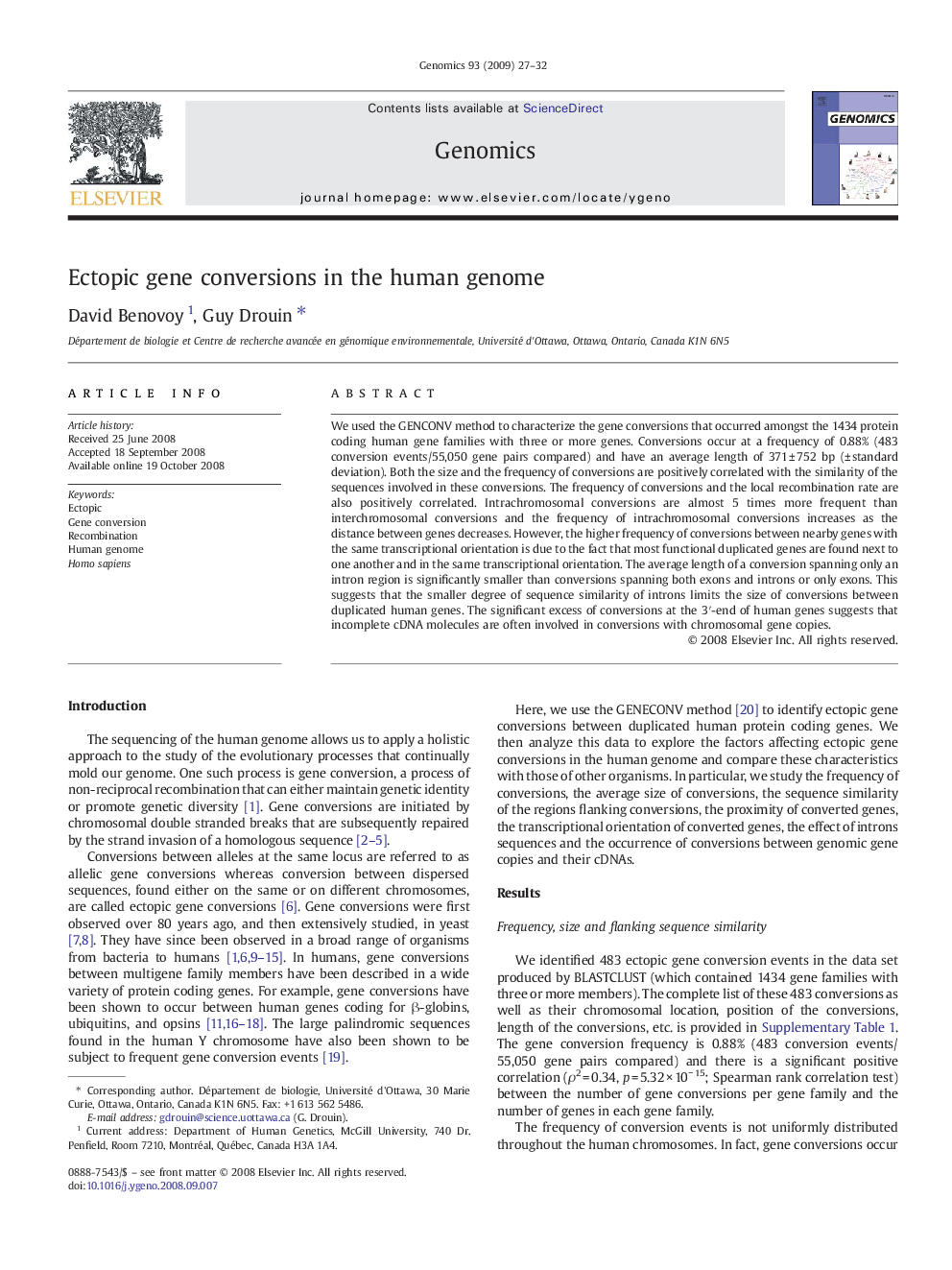| Article ID | Journal | Published Year | Pages | File Type |
|---|---|---|---|---|
| 2821645 | Genomics | 2009 | 6 Pages |
We used the GENCONV method to characterize the gene conversions that occurred amongst the 1434 protein coding human gene families with three or more genes. Conversions occur at a frequency of 0.88% (483 conversion events/55,050 gene pairs compared) and have an average length of 371 ± 752 bp (± standard deviation). Both the size and the frequency of conversions are positively correlated with the similarity of the sequences involved in these conversions. The frequency of conversions and the local recombination rate are also positively correlated. Intrachromosomal conversions are almost 5 times more frequent than interchromosomal conversions and the frequency of intrachromosomal conversions increases as the distance between genes decreases. However, the higher frequency of conversions between nearby genes with the same transcriptional orientation is due to the fact that most functional duplicated genes are found next to one another and in the same transcriptional orientation. The average length of a conversion spanning only an intron region is significantly smaller than conversions spanning both exons and introns or only exons. This suggests that the smaller degree of sequence similarity of introns limits the size of conversions between duplicated human genes. The significant excess of conversions at the 3′-end of human genes suggests that incomplete cDNA molecules are often involved in conversions with chromosomal gene copies.
